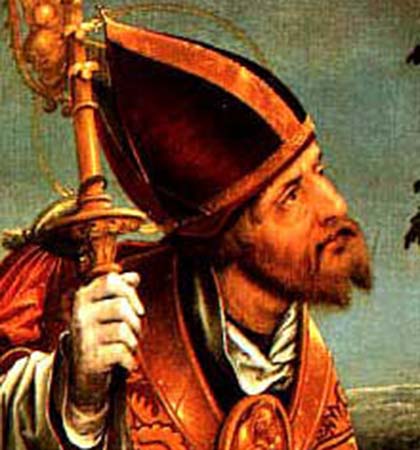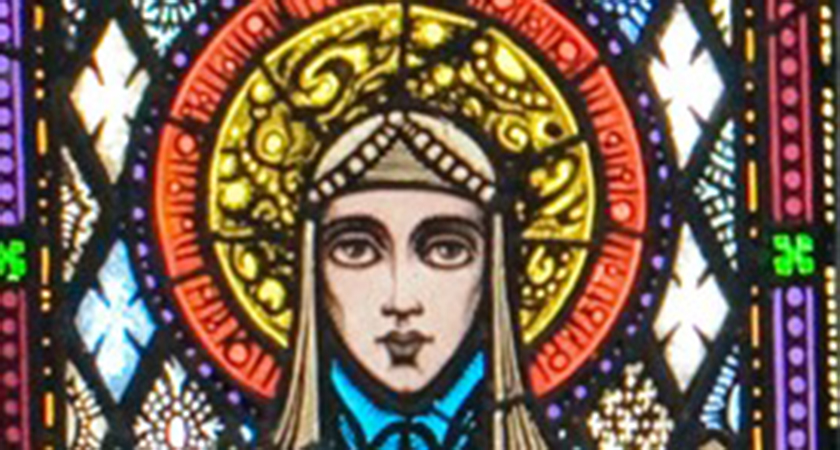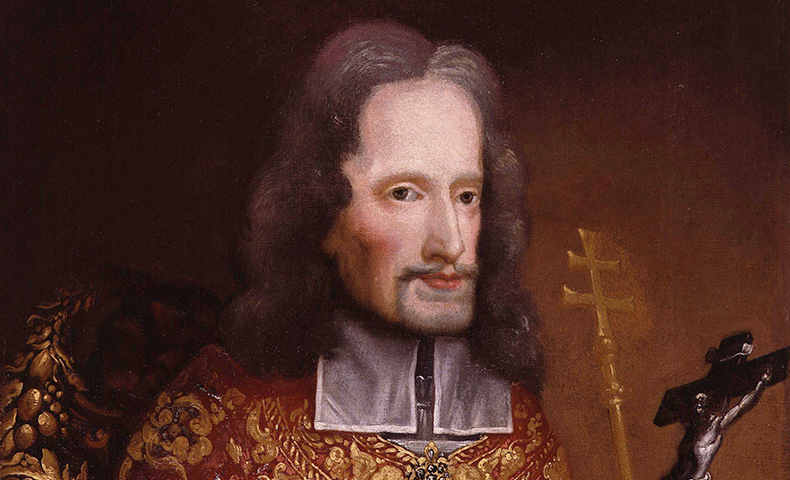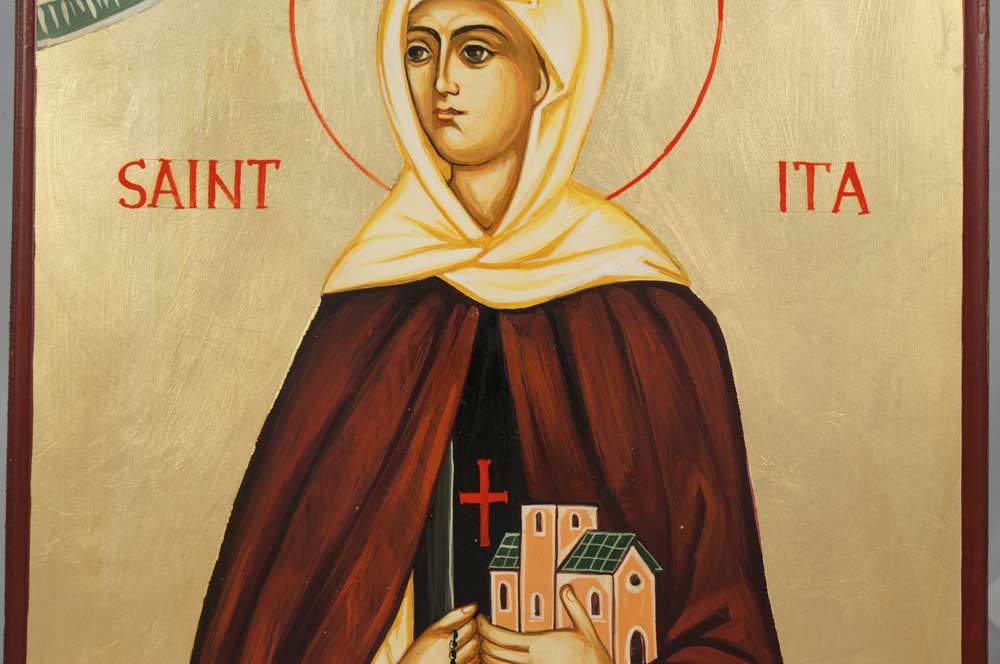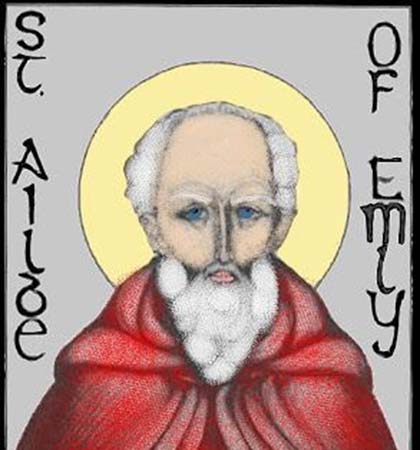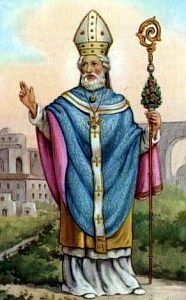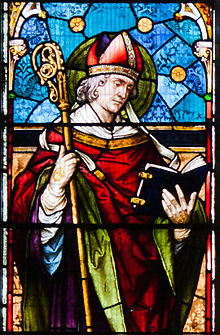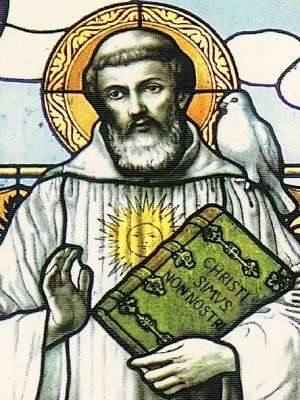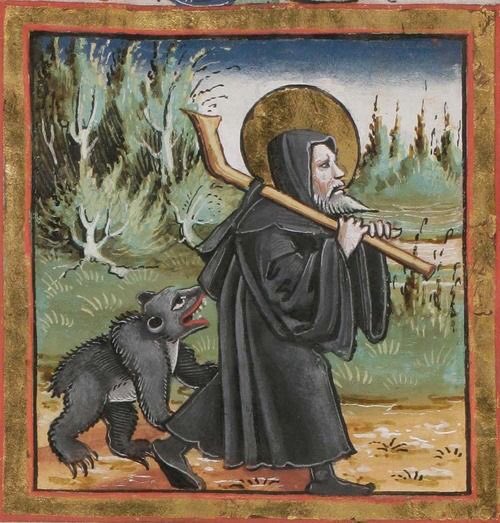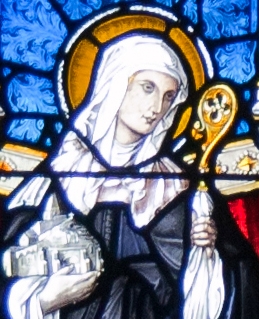All Saints' Day, also known as All Hallows' Day or the Feast of All Saints, is a Christian solemnity celebrated in honour of all the saints of the church, whether they are known or unknown.
Here are twelve Irish saints you should know about who are not Saint Patrick.
1. Saint Finbar
Patron saint of Cork
Saint Finbar was born in Connaught, the son of an artisan and a lady of the Irish royal court. He was named Fionnbahrr (meaning 'white head') by monks due to his light hair.
His monastery became famous in southern Ireland and attracted numerous disciples.
Many extravagant miracles are attributed to him, and supposedly, the sun did not set for two weeks after he died at Cloyne about the year 633. But we can't verify that.
2. Saint Brigid
Patron saint of Ireland, dairymaids, cattle, midwives, Irish nuns and new-born babies
Saint Brigid was born Brigit, and shares a name with a Celtic goddess from whom many legends and folk customs are associated.
Brigid is celebrated for her generosity to the poor. In her case, most of the miracles associated with her relate to healing and household tasks usually attributed to women.
Every year on St Brigid's feast day, 1 February, formerly celebrated as a pagan festival, children in Catholic schools in Ireland make Brigid's crosses – like the one Brigid is holding in the picture opposite.
The small cross usually woven from rushes. Typically it has four arms tied at the ends and a woven square in the middle.
3. Saint Colmcille
Patron saint of Derry, floods, bookbinders, poets, Ireland, Scotland
Saint Colmcille (Columba) was probably born in 521 in Co. Donegal.
After he was ordained, he left Ireland at the age of 42, possibly because of a family feud which resulted in the death of 3000 people which he was partly blamed for. He is one of the three chief saints of Ireland, after St Patrick and St Brigit of Kildare.
Moral of the story: don't get into a feud with St Columba.
4. Saint Oliver Plunkett
Patron saint of Peace and Reconciliation in Ireland
After he was ordained, due to religious persecution in his native land, it was not possible for Olive Plunkett to return to minister to his people. Therefore Oliver taught in Rome until 1669, when he was appointed Archbishop of Armagh and Primate of Ireland. He soon established himself as a man of peace and set about visiting his people, establishing schools, ordaining priests, and confirming thousands.
Oliver Plunkett was beatified in 1920 and canonised in 1975, making him the first new Irish saint for almost 700 years, and the first of the Irish martyrs to be beatified.
He also has a whole street in Cork named after him, which is class.
5. Saint Ita
Patron saint of Roman Catholic Diocese of Limerick
Saint Ita is an interesting fish. Born at Decies, Co. Waterford she refused to be married, and secured her father's permission to live a virginal life.
St Ita was said to embody the six virtues of Irish womanhood – wisdom, purity, beauty, musical ability, gentle speech and needle skills. Yes, we said needle skills. But things were different back in the year 475.
Many extravagant miracles were attributed to her. In one of them she is reputed to have reunited the head and body of a man who had been beheaded; in another she lived entirely on food from heaven, which would save you a fortune on the weekly food shop.
6. Saint Ailbhe
Patron saint of Wolves
Saint Ailbhe was a bishop, preacher, and a disciple of St Patrick. In some records he is called Albeus and was noted for his charity and kindness, as well as his eloquent sermons.
It was claimed that he was left in the woods as an infant and suckled by a wolf, sort of life Ireland's answer to Tarzan.
Later, the legend goes an old she-wolf came to Ailbhe for protection from a hunting party, resting her head upon his breast. You can't beat cuddles with a she-wolf.
7. Saint Cataldus
Patron saint of Taranto, invoked for protection from plagues, droughts and storms
The story goes that Saint Cataldus' monastery was in Lismore, Co. Waterford but one day he ventured to Jerusalem, as you do.
On his way home his ship became wrecked in Taranto in Italy and the people begged him to stay and be their bishop so he did.
Some of the miracles claimed in Cataldus' name include protecting the city against the plague and floods that, apparently, had occurred in neighbouring areas.
When his coffin was reopened, it allegedly contained a golden Celtic cross and a stick carved from Irish oak featuring Celtic design which was to become Cataldus’ emblem.
8. Saint Colman of Stockerau
Patron saint of Austria; Melk; patron of hanged men, horned cattle, and horses
Originally known as Colmán, he was an Irish pilgrim en route to the Holy Land when he was mistaken for a spy because of his strange appearance. He was tortured and hanged at Stockerau in Austria.
Legend states that Coleman's body remained incorruptible for 18 months, undisturbed by birds and beasts. The scaffolding he met his untimely death on is said to have taken root and to have blossomed with green branches.
We have no idea why he is patron saint of horned cattle and if you have gout, we recommend you consult your doctor.
9. Saint Columbanus
Patron saint of motorcyclists
Saint Columbanus was an Irish missionary notable for founding a number of monasteries in Burgundy, Luxeuil, Switzerland and Italy which were known for their strict rules and their emphasis on corporal punishment. Sounds fun!
He performed many miracles including making a bear evacuate a cave at his biddings, destroying a cauldron of beer with his breath and taming a bear and yoking it to a plough. Basically, he was great with bears.
Also, good to know there's someone up there looking out for all the Hell's Angels.
10. Saint Gall
Patron saint of birds, geese, poultry and Sweden
Saint Gall, or Gallus, was born in Ireland in 550 and was one of the traditional 12 companions of Saint Columbanus on his mission from Ireland to the continent.
A popular legend is that when St Gall was in the woods, he was sitting at a fire when a bear emerged from the bushes and charged at him.
He rebuked the bear, so awed by his presence it stopped its attack, gathered firewood and sat at the fire with him.
11. Saint Fiacre
Patron saint of Gardeners and cab-drivers
Saints Fiacre set up a hospice for travellers which developed into the village of Saint-Fiacre in Seine-et-Marne. Many resorted to him for advice, and the poor, for relief. He sometimes miraculously restored to health those that were sick. The fame of Saint Fiacre's miracles of healing continued after his death as crowds visited his shrine for centuries after.
Weirdly, he has been taken on as the patron saint of cab-drivers of Paris. French cabs are called fiacres because the first establishment to let coaches on hire, in the middle of the seventeenth century, was in the Rue Saint-Martin, near the hotel Saint-Fiacre, in Paris.
Unfortunately St Fiacre wasn't a big fan of women and banned them from his monastery. He was however, a dab hand with gardening and herbs.
12. Saint Athracht
Patron saint of Tourlestrane, Co. Sligo, Ireland
Saint Athracht, or Attracta, is traditionally listed as a daughter of a sixth century noble Irish family in County Sligo.
Her father opposed her religious vocation but she went to St Patrick and made her vows to him before founding a hospice on Lough Gara.
Local tradition remembers her great healing powers. Her convents were famous for hospitality and charity to the poor. Today a local well is named after her, as is the new secondary school in Tubbercurry and a church in Kilmactigue.

